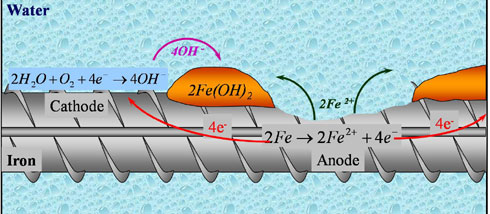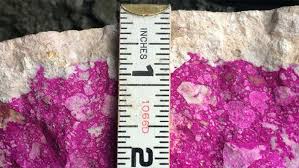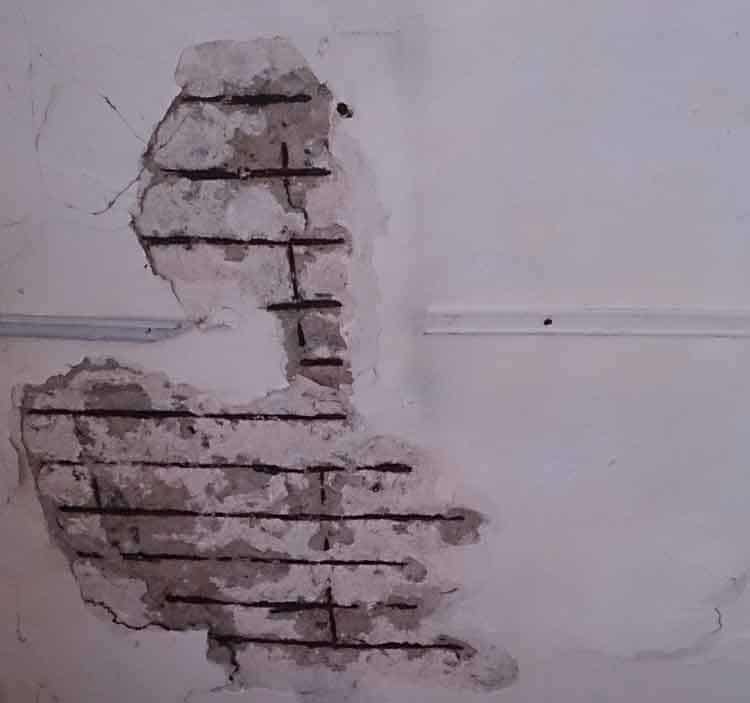Concrete carbonation is a very important issue for civil engineers because it is directly related to the durability of reinforced concrete.
Let's take a look first
What is concrete carbonation?
It is a process of The calcium hydroxide contained in concrete reacts with carbon dioxide in the atmosphere to produce calcium carbonate and water. .
Ca(OH) 2 +CO 2 → CaCO 3 +H 2 Ó
This process begins at the surface of the concrete and gradually progresses towards the interior of the concrete. Concrete carbonation is a slow and continuous process.
If the carbonation front reaches the reinforcement, it could cause corrosion of the steel.
How does reinforcement corrosion occur?
During the carbonation reaction, the pH value of the concrete drops to approximately 9. At this value, the protective oxide layer around the reinforcement breaks down, which can lead to corrosion of the reinforcement.
The armor is protected by the alkaline state of the cement stone. This is neutralized by carbonation, which allows corrosion in the presence of oxygen and moisture.

If this process continues, the volume around the reinforcement increases and then cracks appear in the coverage area as the reinforcement becomes even more exposed to the environment. Furthermore, due to this corrosion, chipping can also occur as the internal volume increases.
As a result, the strength of the reinforcement is compromised and its tensile strength is lost.
The article on How to prevent corrosion Reference could also be made to information on corrosion protection measures
Factors affecting the carbonation rate of concrete
There are factors related to concrete and the external environment that influence carbonation.
Let's list them all.
- Concrete quality
- Water-cement ratio
- Concrete permeability
- Coverage for reinforcements
- Relative humidity
- Concentration of carbon monoxide in the environment
- surface protection
- Age of the structure
- The orientation of the structure
- Additions
- Concrete porosity
- Healing time
The above factors are directly related to the carbonation of concrete and the changes made could reduce the carbonation rate of the reinforcement steel.
How to Test Carbonation
The degree of carbonation can be determined very early through a simple test.
A phenolphthalein solution containing 1% phenolphthalein is sprayed onto the freshly exposed concrete.
If the color of the concrete changes to pink, that area of the concrete is not carbonated. The area that was not discolored by the use of phenolphthalein is carbonated.
There are other methods like IR spectrum analysis of carbonized concrete. The CO 2 method measures absorption through the sample.
Furthermore, empirical methods have been developed to calculate the carbonation depth of concrete.

How do you calculate depth of carbonation?
The following equation can be used to calculate the time required for carbonation to fortification.
t = (d/k) 2
Where t is the carbonation time, d is the concrete cover and k is the permeability of the concrete.
Using this equation we can determine the time it takes for carbonation to achieve improvements. Knowing the age of the building allows us to check whether the reinforcements are affected by carbonation.
This can be used as an approximation method and typical permeability of concrete in relation to concrete grade can be used.
Other similar natural equations have been developed that contain more parameters for calculating carbonation depth.
Now let’s discuss the most important topic…
How to avoid concrete carbonation
The best thing to do is to slow down this process, as it is very difficult to stop it completely.
However, to avoid/minimize concrete carbonation, the following could be implemented.
- Since the higher water-cement ratio contributes to a greater depth of carbonation, this could be controlled if possible.
- Proper curing of the concrete and a longer curing time will help the concrete respond well and reduce cracking in the concrete. Proper curing reduces the permeability of concrete and as a result, the rate of carbonation decreases.
- Use of additives to change the pore structure and reduce the permeability of concrete.
- To reduce the porosity of concrete, additives such as silica fume with greater surface area could be used.
- The use of protective coatings improves the Durability of the concrete and further in the carbonation process.
- It has been proven that self-compacting concrete has better performance against concrete carbonation.
Repairing corroded rebar due to concrete carbonation can be done in the same way as other corroded rebar repairs.
Repair concrete
- Thoroughly clean the affected area and remove all loose concrete.
- Clean the reinforcements.
- This can be done manually using a wire brush or an appropriate chemical cleaner can be applied to remove the rust.
- If the reinforcements are so damaged that they can no longer withstand the tensile forces, they must be replaced.
- Protect reinforcements with corrosion inhibitors.

- Apply binder to the concrete surface for better adhesion.
- Apply a suitable mortar. It can be non-shrink concrete or mortar mix approved by the civil engineer.



